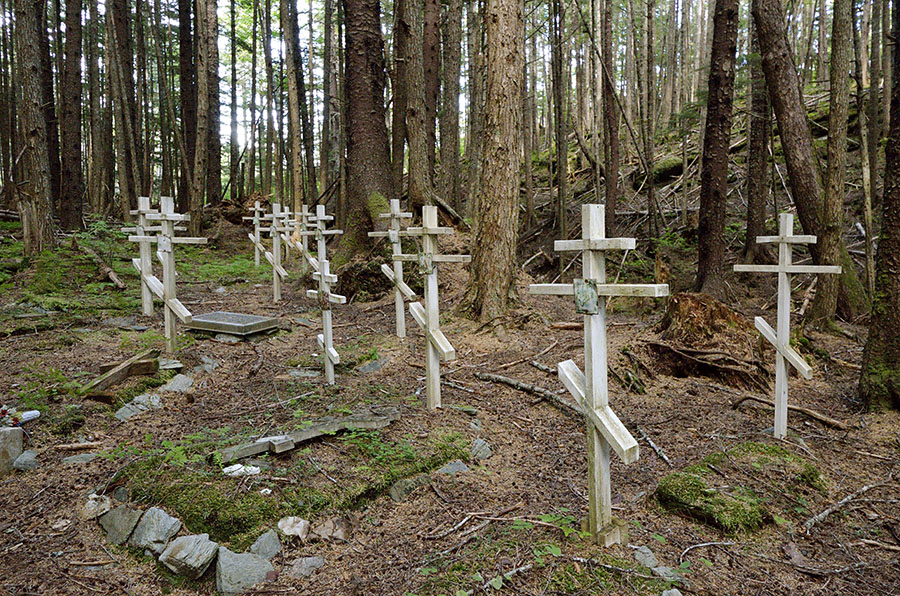

A plan of the Funter Bay cannery made in August of 1942 shows the original cannery buildings plus tent locations added for St. Harris Company – a well-known Alaska fish processor from 1912 until 1950 and the predecessor of Peter Pan Seafoods (MacDonald 1949:32).įigure 12. Nonetheless, in 1931 the cannery was closed for what turned out to be forever, due to a water shortage (Colby 1941:149).In 1941 the property was sold to the P.E. During the 1930 season the Funter Bay cannery operated with two stationary and 19 floating fish traps (Bower 1931:44). This was a boom time for Alaska’s fisheries (Cooley 1963:84, 102), particularly in southeast Alaska, and Chatham Strait had major facilities canning, salting, or rendering bottom fish, salmon, herring, and whale (Mobley 1994:30-31 1999:8-18). A fire on May 31, 1929, destroyed “the Oriental bunkhouses and a number of Indian cottages” (Pacific Fisherman 1930:64-65).


In 1926 the Funter Bay cannery was sold to the Alaska Pacific Salmon Corporation, which continued packing fish until 1930 or 1931 (Bower 1941:134 MacDonald 1949:32). All of the cannery’s fish came from five large commercial fish traps, and the work force consisted of Native, Chinese, Japanese, and EuroAmerican laborers (Kutchin 1906:22). By early August of 1907 the Thlinket Packing Company at Funter Bay was processing its sixth annual pack of pink salmon.Īlaska State Library Case & Draper collection PCA39-1002Ī warehouse was built in 1906, and during the following year the cannery building was expanded to hold additional machinery (Figure 11), so that by 1907 the facility had the capacity to pack 2,500 cases of pink salmon a year under labels such as “Buster,” “Sea Rose,” “Autumn,” “Peasant,” “Thlinket,” “Tepee,” and “Arctic Belle” (Pacific Fisherman 1907:21). That same year a U.S.Post Office was established at the cannery (Orth 1967:357).įigure 11. The land was patented as U.S.Mineral Survey 560 (Hill 1901), and Barron had a cannery built at Funter Bay and was packing fish by 1902 (Cobb 1922:44). It’s unlikely that the elder Barron had any intention of mining the claim he completed the initial $1000 worth of assessment work by excavating a 20’x 40’ hole six feet deep along the shore at what would become a warehouse site, and by digging a 2’ x 2’ “water flume” from a small creek to a point beside the machine shop that would become the cannery’s powerhouse. Barron was the father of Robert Barron, for whom the Peninsula’s highest point is named (Orth 1967:808). Barron organized the Thlinket Packing Company (Gaston 1911:88-89) and applied for 11.75 coastal acres on the northwest end of Admiralty Island as a mining claim – the Irvington Lode. 1998:37-44), and Funter Bay had probably long been favored for seasonal fishing (Figure 10). The Mansfield Peninsula is within the traditional territory of the Wuckitan clan of the Auk Tlingit (Goldschmidt et al.

The mountain’s peak and upper slopes are above treeline a thick forest of spruce and hemlock carpets the landscape below to the water’s edge (Figure 8). The land consists of rolling moraine deposits from sea level up to an elevation of almost 500’, punctuated by sheer rock cliffs occurring from sea level up to the Peninsula’s highest point – Robert Barron Peak at 3475’ (Orth 1967:808). The cannery site is on a small peninsula projecting southwest into Funter Bay, on the Mansfield Peninsula at the northwest end of Admiralty Island (Figures 8-9). Paul spent most of World War II at the Thlinket Packing Company cannery at Funter Bay. See Figure 4 to orient map location in southeast Alaska. Map of the Funter Bay locality on the Mansfield Peninsula of Admiralty Island.


 0 kommentar(er)
0 kommentar(er)
